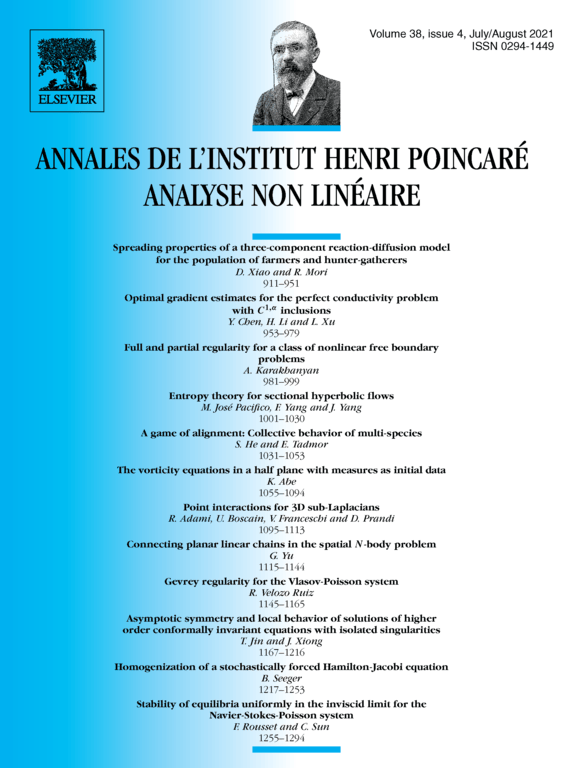Optimal gradient estimates for the perfect conductivity problem with C1,α inclusions
Longjuan Xu
School of Mathematical Sciences, Beijing Normal University, Laboratory of Mathematics and Complex Systems, Ministry of Education, Beijing 100875, ChinaYu Chen
School of Mathematical Sciences, Beijing Normal University, Laboratory of Mathematics and Complex Systems, Ministry of Education, Beijing 100875, ChinaHaigang Li
School of Mathematical Sciences, Beijing Normal University, Laboratory of Mathematics and Complex Systems, Ministry of Education, Beijing 100875, China

Abstract
In high-contrast composite materials, the electric field concentration is a common phenomenon when two inclusions are close to touch. It is important from an engineering point of view to study the dependence of the electric field on the distance between two adjacent inclusions. In this paper, we derive upper and lower bounds of the gradient of solutions to the conductivity problem where two perfectly conducting inclusions are located very close to each other. To be specific, we extend the known results of Bao-Li-Yin (ARMA 2009) in two folds: First, we weaken the smoothness of the inclusions from to . To obtain a pointwise upper bound of the gradient, we follow an iteration technique which is first used to deal with elliptic systems in a narrow domain by Li-Li-Bao-Yin (QAM 2014). However, when the inclusions are of , we can not use estimates for elliptic equations any more. In order to overcome this new difficulty, we take advantage of De Giorgi-Nash estimates and Campanato's approach to apply an adapted version of the iteration technique with respect to the energy. A lower bound in the shortest line between two inclusions is also obtained to show the optimality of the blow-up rate. Second, when two inclusions are only convex but not strictly convex, we prove that blow-up does not occur any more. The establishment of the relationship between the blow-up rate of the gradient and the order of the convexity of the inclusions reveals the mechanism of such concentration phenomenon.
Cite this article
Longjuan Xu, Yu Chen, Haigang Li, Optimal gradient estimates for the perfect conductivity problem with C1,α inclusions. Ann. Inst. H. Poincaré Anal. Non Linéaire 38 (2021), no. 4, pp. 953–979
DOI 10.1016/J.ANIHPC.2020.09.009